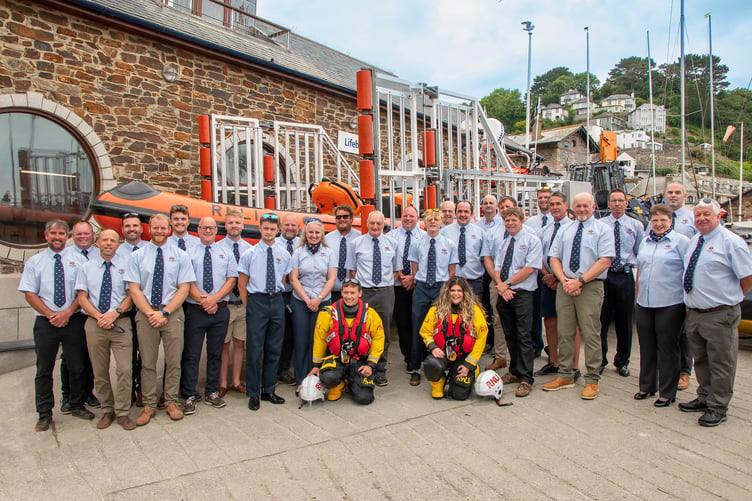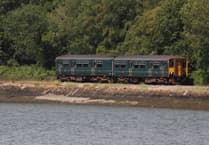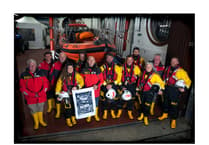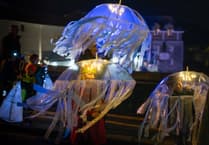aS the RNLI counts down the days to its historic milestone birthday, Looe RNLI has taken a look back into its historic journey of saving lives at sea.
Monday, March 4, 2024 will mark the RNLI’s 200th birthday.
The RNLI has been saving lives at sea since it was founded in 1824 and, in that time, its lifeboat crews and lifeguards have saved more than 144,000 lives.
From oar-powered vessels to the boats packed with cutting-edge technology used today; from introducing the first lifeboats on the River Thames to rolling-out a UK beach lifeguard service; from running the UK’s biggest ever drowning prevention campaigns to working with others to save lives overseas — the RNLI has a remarkable 200 year story to tell.
Throughout its bicentenary year, the charity will be running events and activities to remember its important history and celebrate the modern lifesaving service it is today, while hoping to inspire generations of future lifesavers and supporters.
Exhibitions, outdoor events, special services of thanksgiving, partnerships and education programmes are just some of the activities which will be taking place across the UK and Ireland. There will also be a special 200th anniversary retail range available through the RNLI’s shops and online.
RNLI chief executive, Mark Dowie, said: “It has been an honour and a privilege to be at the helm of the RNLI for approaching five years, and to see the charity reach its bicentenary. For a charity to have survived 200 years based on the time and commitment of volunteers, and the sheer generosity of the public donating to fund it, is truly remarkable. It is through the courage and dedication of its incredible people that the RNLI has survived the test of time, including tragic losses, funding challenges, two world wars and, more recently, a global pandemic.
“In 2024, we mark the bicentenary of the RNLI. We remember the achievements and commitment of all those who have been part of the RNLI family over the past two centuries; we celebrate the world-class lifesaving service we provide today, based on our 200 years of learning, expertise and innovation, and we hope to inspire future generations of lifesavers and supporters who will take the RNLI into its next century and beyond.
“I am immensely grateful to everyone who is involved with the charity – our volunteers, supporters and staff. This is our watch and it is our role to keep our charity safe and secure so it can continue to save lives into the future, as we strive in our vision to save every one.”
A brief history of Looe Lifeboat Station
Whilst the RNLI was formed in 1824 it was 42 years later that Looe Lifeboat Station was opened on 28 December 1866.
Following a number of shipwrecks in the area, on April 5 1866, the residents of Looe wrote to RNLI headquarters in London regarding the provision of a coastguard type lifeboat, or a ‘whale-boat’ for the area, their letter being received at a meeting of the RNLI committee of management on April 8. At that same meeting, the institution received the sum of £420 from Sir John Pollard-Willoughby, which he had raised from people living on Oxfordshire, with a view to providing a lifeboat, to be named ‘Oxfordshire’. And so, with the institution accepting the need for a lifeboat to be stationed at Looe, the RNLI recommended to the people of Looe, that the institution should provide a standard RNLI lifeboat.
That suggestion was accepted by the residents and so, in May that year, the RNLI’s inspector of lifeboats, captain John Ward, RN, visited the area, to check the whole situation and then select a suitable site for a boathouse.
Eventually, the boathouse was built close to the harbour, by local builders at a cost of £220.
The Oxfordshire remained on service in Looe until July 17, 1882 when the Boys Own No.1 was placed on station. The Oxfordshire was withdrawn from service after 12 service launches saving 14 lives.
A notable service for the Boys Own No.1 was on December 7, 1901, when the lifeboat assisted the vessel Gipsy of Nantes. Fourteen crew were taken on board the lifeboat and the remaining five got into the ship’s boat and was taken in tow. With the help of a tug all landed safely at Looe. Three kittens were also saved. The French government awarded a gold medal, 2nd class, to Coxswain Edward Toms and silver medal, 2nd class, to each of the crew for the service to the Gipsy.
On May 25, 1902, a third self righting Lifeboat Ryder arrived in Looe.
Boys Own No.1 was withdrawn from service after seven service launches saving 23 lives. Unfortunately Looe cannot claim 158 years of continuous service as the lifeboat station was closed on July 31, 1930. The Ryder was withdrawn from service and subsequently sold, during her time in Looe the Ryder was launched 12 times on service, saving 37 lives.
Sixty-two years later, on June 15, 1992, an inshore lifeboat station was re-established in Looe. Initially for a trail summer season the lifeboat was housed in the seafront ELTT shelter.
After the volunteer crew responded to 11 shouts in the summer of 1992, saving six lives, the RNLI decided to make it operational all year round.
In July 1998 a new boathouse and shop opened on Middleton’s corner.
The D Class was launched into the river using a davit on the quayside, or pushed along Buller Quay to the slipway.
In 2003 the station moved to the purpose built Albatross Boathouse on the seafront when an Atlantic 75 was placed on service alongside the D Class inshore lifeboat. The Atlantic 75 was replaced with the larger Atlantic 85, Sheila and Dennis Tongue II in 2016 the new D Class Ollie Naismith II was placed on service, at 12 noon Saturday, November 19, 2022. During 2023 the station saw it’s 1000th service launch since it was re-established.
For more information on the RNLI’s birthday visit rnli.org/about-us/our-history/2024





Comments
This article has no comments yet. Be the first to leave a comment.